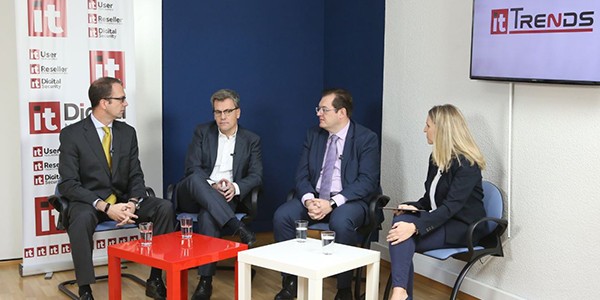Building the digital platforms of the future

Cybersecurity strategies, different ways of using artificial intelligence and changes in business models are just some of the technological trends that came under the spotlight in the online encounter of the digital review IT Trends entitled “Building the digital platforms of the future”. One of the keynote speakers in this session was Javier Zubieta, Marketing and Communications Manager of GMV’s Secure e-Solutions sector.
In an era marked by the digital transformation it is crucial to analyze which are the main breakthroughs and ingredients we can’t afford to leave out of our strategies if we wish to be properly prepared for the future. The prime challenge of all, however, is to tackle these changes across the board, involving all stakeholders. Here the CIO plays a cohesive role in laying down the working framework of the business. How are these technologies evolving? Which technological breakthroughs are being taken up by organizations?
We at GMV have witnessed unusual movements in fairly traditional sectors with little ICT history that have now decided to take up the digital transformation in a big way. Cases in point are the healthcare sector and the industrial sector, which are now using technologies such as cloud computing and data analysis to choose research projects or make key decisions. In these sectors it is now impossible to obtain the results required without taking up new technology. “If an organization takes up a technology like Edge Computing to optimize and enhance management in industrial environments, this will undoubtedly be welcomed by the market and stakeholders”, argues Zubieta. Edge Computing is a clear example of a promising technology for the automation of industrial plant, keeping processing close to the final point instead of sending it up to a centralized cloud server, together with enabling technology like collaborative robotics and incorporating IoT. This allows us to process information and make decisions while reducing traffic and response latency.
Furthermore, automation allows us to recover from an incident at the speed demanded by the business in hand. This would be a case of using artificial intelligence in the field of cybersecurity for incident preparation and response. The use of automation mechanisms, many of them based on artificial intelligence, prepares us for responding to threats on different fronts: i.e., early detection of suspicious behavior; reconstruction of any incidents that might have occurred, and deciding how the company might get to be cyber-resilient.
Artificial Intelligence is now awaiting its definitive takeoff and democratization in the short term. Machine learning is already transforming the way data analysis is used, carried out and shared. The capacities of augmented analytics are being taken up widely not only for working with the information but also for implementing it in the particular business applications of each department, thereby optimizing decision-making by means of an in-depth data analysis.
In this whole scenario cybersecurity stands out as a glaring need, making itself necessary from the very start of any digital transformation process. “Although cybersecurity is a growing expenditure item, rare is the company in which it tops 7% of the technology budget” explains Javier Zubieta. He goes on, “the paramount short-term challenge is to guarantee the privacy of users’ personal data and thus win their trust”. The greatest worry of people today is how their personal data is being used by public and private organizations to adapt themselves to the upcoming changes. The companies that triumph, therefore, will be those that are tackling these qualms proactively and proving themselves to be trustworthy for users.